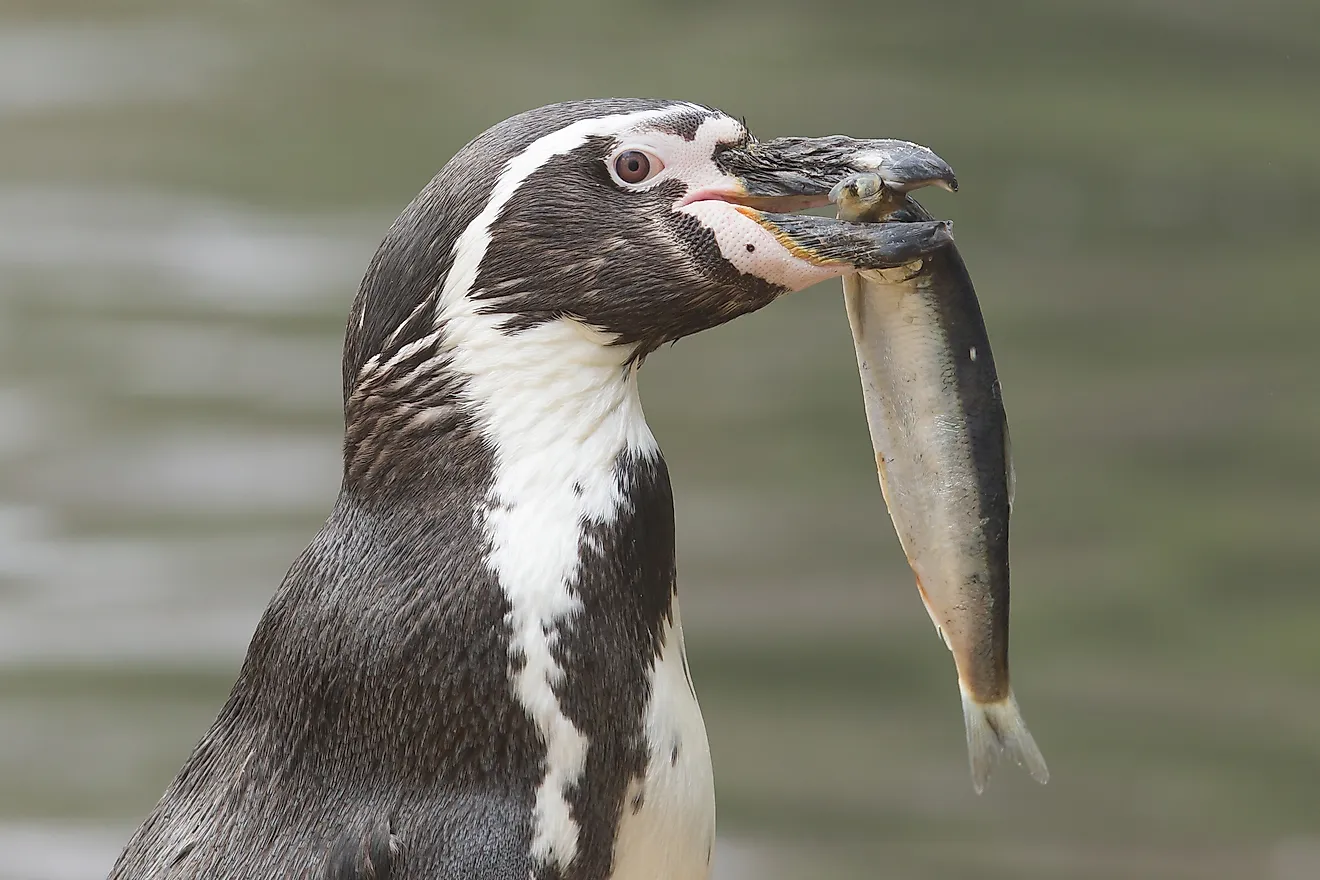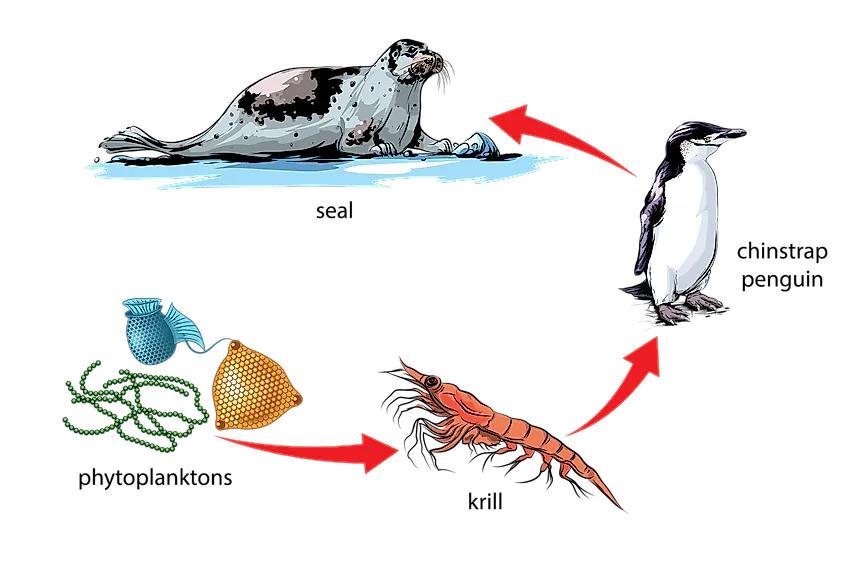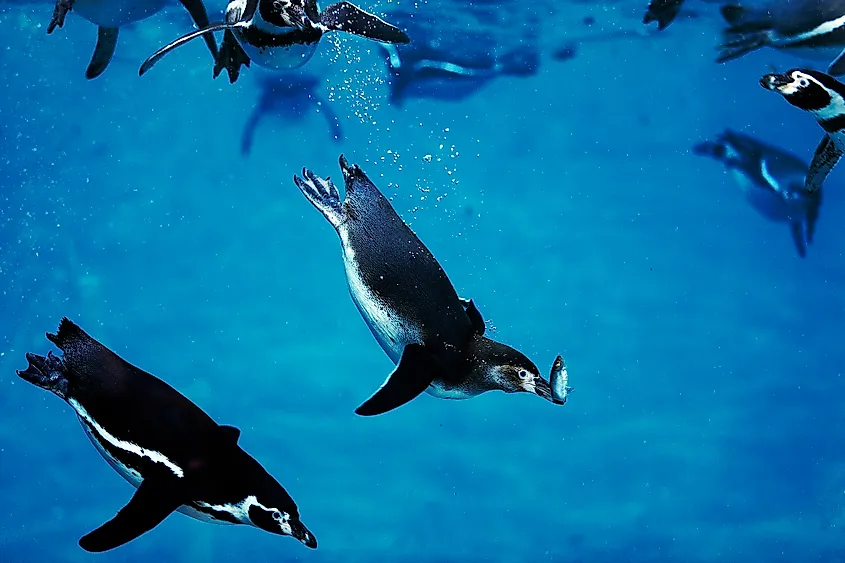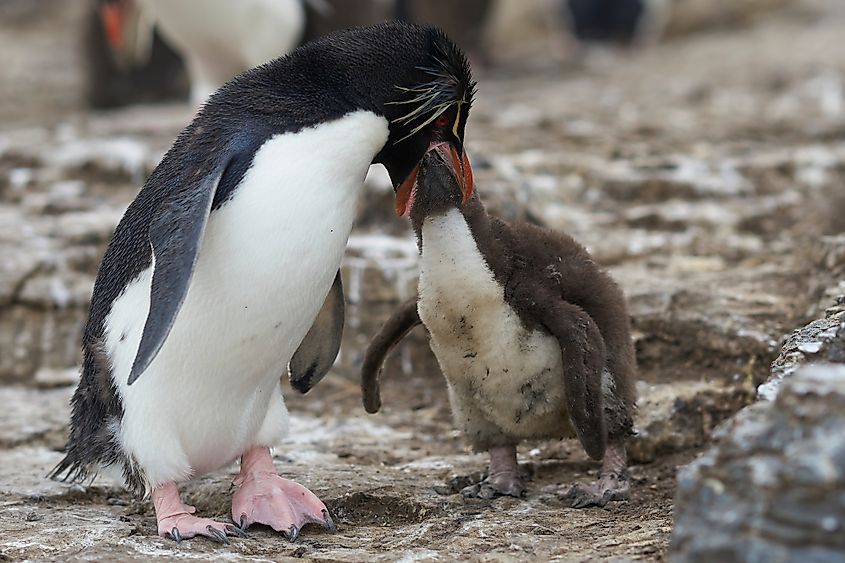What Do Penguins Eat?

- Penguins are carnivores whose diet mostly consists of crustaceans, fish, and cephalopods like squid and cuttlefish.
- While hunting, yellow-eyed penguins will dive as deep as 395 feet more than 200 times a day looking for food.
- Some experts suggest that penguins purposefully shallow stones to reduce buoyancy while diving for food.
Penguins are aquatic, flightless birds who live in the southern hemisphere of our planet. While many populate the icy continent of Antarctica, others live in hotter climates like tropical islands.
There are between seventeen and nineteen species of penguin in total. Many are black-and-white as depicted in pop culture, but others can be quite colorful, such as the crested penguin with its crown of yellow feathers or the king penguin with its orange neck markings.
The blue penguin is generally considered the smallest of its kind, growing up to twelve inches and weighing no more than three pounds. The emperor penguin is easily the largest, measuring up to 44 inches and weighing anywhere between sixty and ninety pounds.
What Do Penguins Eat?

Penguins are carnivores. Their piscivorous diet mostly consists of crustaceans, fish, and cephalopods like squid and cuttlefish. They consume large quantities of krill in particular. An abundance of these aquatic creatures are necessary for penguin colonies to thrives.
Different species tend to have specific preferences; this helps avoid competition for similar food sources. Chinstrap penguins primarily feast on krill, whereas fish like cod and sardines make up roughly eighty percent of an emperor or king penguin’s diet.
The amount of food that is consumed depends entirely on the variety and availability of prey. Nonetheless, penguins typically have very large appetites. For example, Adélie penguins can eat up to 1.5 million metric tons of krill, 115,000 metric tons of fish, and 3,500 metric tons of squid every year.
Hunting For Food

All penguins hunt in water. When they go out, it is either in small groups or by themselves. Distance of travel depends on species. Adélie penguins swim up to nine miles looking for food during a single trip, while emperor penguins might willingly travel up to 900 miles. Most feeding occurs within fifty to sixty feet of the surface; however, some species such as the yellow-eyed penguin will dive as deep as 395 feet more than 200 times a day looking for food. Similar to consumption, hunting location depends on season and availability of prey.
While hunting, penguins never stop swimming. They merely snatch their prey between their bills and swallow it whole. Rough tongues and powerful jaws help them guzzle down the more slippery and hard-to-catch victims.
Penguins rely on their vision to hunt. Luckily, they have great eyesight that allows them to see underwater. This is possible in part to their ability to change the shape of their eye lens which helps produce a clearer image. They also have a nictitating—or blinking—membrane that protects it from floating debris. Despite these evolutionary advantages, some experts theorize that bioluminescent animals also help them see in darker waters and at greater depths.
Furthermore, Galápagos penguins—the only penguin found north of the equator—participate in multispecies feeding with various types of seabirds like pelicans, cormorants, and blue-footed boobies.
Stone Swallowing
Interestingly, stones have been found in the stomachs of many penguins, including gentoo, African, and Magellanic penguins. In one instance, an emperor penguin was discovered with approximately ten pounds worth of stones in its belly.
Experts are not completely convinced that they are ingesting them on purpose, but many penguin species have been observed swallowing stones knowingly. There are many theories to explain why they would do this, the most widely accepted of the bunch suggesting that the added weight reduces buoyancy while diving for food. Other experts have guessed that it helps in the digestion of crustaceans with tough exoskeletons.
Fasting Periods
Penguins observe several fasting periods, meaning they will not eat for long stretches of time. Prior to fasting, they will produce several layers of fat that help provide energy. The length of each fast depends on species, gender, and type of fasting. Male emperor penguins are known to fast the longest—anywhere up to 120 days.
Penguins generally fast during breeding season and will not leave the nest to find food. Some fast throughout the entire mating process, including the courtship of potential partners. Other penguins fast during the moulting period when they shed their old feathers for new ones. The lack of insulation and waterproofing during this time prevent them from entering cold waters to hunt.
Baby Chicks

During breeding season, penguin colonies come together to form rookeries. Oftentimes, males will pick out a nesting site before approaching females. Emperor and king penguins lay one egg, while all other species lay two. In all cases except one, both partners take turns holding the eggs between their legs for warmth. Male emperor penguins, on the other hand, care for their single egg in the fat folds of their feet while the female goes out to hunt for several weeks.
When the time is right, penguin chicks use their beaks to break through the shell; this process can take up to three days. After they are born, their parents feed them with regurgitated food. Penguins have two-chambered stomachs that allow them to store food to carry back to their young. Male emperor penguins can even produce a curd-like substance to feed their babies for up to two weeks if the mother has not yet returned from hunting.
Just like adult penguins, chicks also fast when they are ready to shed their juvenile feathers. By this time, their parents are no longer feeding them. As early as the age of three, chicks are mature enough to mate and the cycle begins again.
Penguins In Captivity
Penguins in zoos or rehabilitation centers usually maintain the same kind of piscivorous diet. Oftentimes, they will be fed supplements to ensure they remain healthy. However, these penguins will not experience long fasting periods like their wild counterparts.











